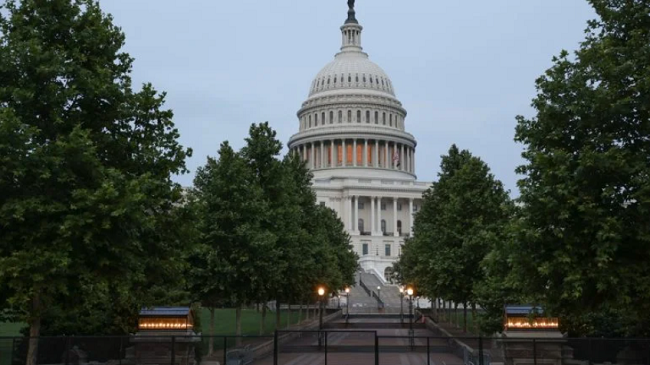The American Apparel and Footwear Association (AAFA) told US Trade Representative (USTR) hearing on supply chain resilience that more free trade agreements are needed in addition to the removal of prison labor, while the National Council of Textile Organizations (NCTO) focused on Effect of de minimis.

AAFA Senior Vice President Nate Herman said at the hearing that 3.2 million US jobs depend on the apparel industry, and they depend on access to foreign customers and global supply chains for their existence.
Resilient supply chains depend on certainty, clarity and flexibility, he added, but tentative signals from Washington suggest a willingness to diversify away from China without negotiating a new free trade agreement (FTA).
“We have seen little effort by the administration or Congress to renew expired trade programs or update existing trade agreements to make them more resilient,” Herman continued.
Meanwhile, NCTO President and CEO Kim Glas called on the United States to be more deliberate in developing trade and investment policies that support the growth and resilience of domestic textile supply chains and counter the so-called dominance of Chinese goods through alleged illegal trade practices.
She believes there are eight ways the US government can help stop the domestic damage to the apparel and textile industry:
- Immediately close the de minimis tariff loophole.
- Dramatically ramp up and publicise customs enforcement and trade penalty activities.
- Preserve and protect the yarn forward rules of origin.
- Reject proposals to expand Generalized System of Preferences product coverage to textiles or apparel.
- Immediately pass the Miscellaneous Tariff bill.
- Increase Section 301 penalties on textiles and apparel imports.
- Fully implement the Make PPE in America Act and expand procurement opportunities.
- Enhance tax incentives to bolster domestic and regional production.
Glas suggests that, despite the domestic textile industry being an integral part of the military and public health industrial base, unregulated foreign predatory trade practices, lack of effective tariff enforcement, and confusing trade policy proposals are creating unstable and unsustainable market dynamics.
In her testimony, Glas said: “The confluence of these factors is threatening the future of domestic textile manufacturing as well as the textile and apparel coproduction chain between US and our Western Hemisphere free trade agreement (FTA) partners responsible for $40bn in annual two-way trade.”
She also explained that 14 US textile factories have closed permanently in recent months and an estimated 100,000 jobs have been lost in the US and the wider hemisphere.
AAFA’s Herman defended the need for foreign input in the apparel supply chain, saying: “Successful contracting and reliability programs are fundamental building blocks for resilient supply chains, supply chains not dependent on China. Further, commodity contracting and reliability programs undermine American values on the environment and labor.” strengthens.”
Harman was keen to highlight the rigidity of the yarn forward rule limiting apparel investment and, in turn, apparel demand and textile investment: “With this vicious cycle and inflexibility the size of the pie never grows and supply chains don’t get more resilient.”
He continued, “The core rules of FTAs and trade programs aim to preserve the benefits of tariff-free trade for beneficiaries. However, restrictive regulations intended to ‘close the back door’ to China may impose substantial barriers and administrative burdens.”
On the other hand, the NCT also claims that China and other Asian countries compete by sourcing subsidized textile inputs from China, including those made with slave labor in Xinjiang where it claims 20% of the world’s cotton is produced and where synthetics like rayon have been tied to forced labor production.
Glas maintained that closing the de minimis loophole is the most important step the US Congress and the Biden administration can take to combat illegal trade practices. She said, “This loophole in US trade laws allows four million packages a day to enter the US duty-free and, in most cases, without inspection.”
AAFA acknowledged that the concept of resilient supply chains is often code for trying to create more US manufacturing and noted that it’s a goal it supports “wholeheartedly.”
However, Herman was quick to add, “The single biggest threat to US manufacturing in our sector – bigger than all others – is the US government’s own addiction to forced labor, the federal prison industry, otherwise known as Unicor or FPI, which pays US prisoners as low as $1.10 an hour.”
He explained that under US law, FPIs receive significant preferences that essentially give FPIs the right of first refusal on US government contracts, including the ability to win contracts that exclude small, minority-owned and women-owned businesses.
He alleged that US taxpayer dollars were used to promote FPI to foreign investors under the Select USA program, “robbing” critical contracts to maintain and expand US apparel and footwear manufacturers. US workforce.
Herman also claimed that the US government is actively promoting an entity that violates at least four but as many as seven of the International Labor Organization’s 11 mandatory labor indicators.
He concluded, “These are the same indicators that US Customs and Border Protection use to enforce US forced labor laws and the UFLPA against US imports of goods made with foreign forced or prison labor.”
















